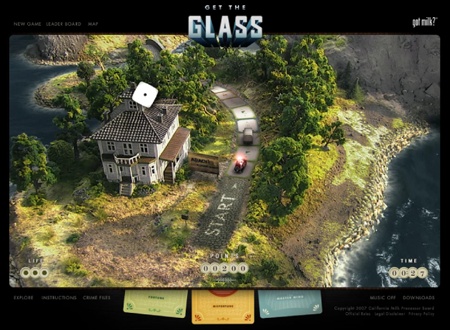Flash: An Introduction
A few years ago, if you wanted to add smooth animation, slideshows, or any other high-quality interactive effects to a web page, Flash was the only game in town. Thanks to the Flash plug-in (available in almost all web browsers), web developers could use the Flash authoring program to make “movies” that played inside a browser and add programming logic so those movies respond to visitor feedback—mouse movement, clicks, and keyboard input. However, the JavaScript programming language and the speedy JavaScript engines in today’s browsers provide an alternative to many simple forms of animation and interactivity. Dreamweaver’s Spry widgets, like Spry tabbed panels and the Spry accordion, are good examples of the interactive effects JavaScript offers.

Figure 14-1. Some websites, like the Get the Glass game, are created entirely with Flash. Its ability to handle interactivity, animation, and video playback makes it a great technology for online games and entertainment websites. But you still need an HTML file to display the Flash movie. (Unfortunately, this remarkable web site is no longer online.)
But for really high-quality animation, games, and interactivity, there’s still no replacement for Flash. For example, the fantastic “Get the Glass” game (www.gettheglass.com) merges game play, video, and animation into an engaging game (as well as a powerful marketing tool ...
Get Dreamweaver CS6: The Missing Manual now with the O’Reilly learning platform.
O’Reilly members experience books, live events, courses curated by job role, and more from O’Reilly and nearly 200 top publishers.

